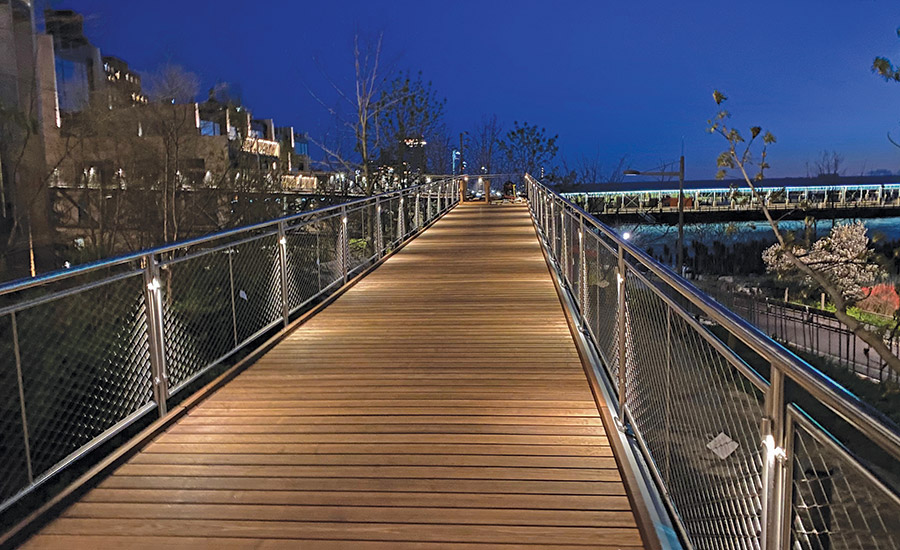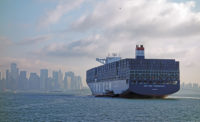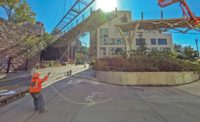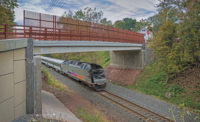Brooklyn Bridge Park Corp. Squibb Bridge
Brooklyn
BEST PROJECT
OWNER: Brooklyn Bridge Park Corp.
LEAD DESIGN FIRM, CIVIL ENGINEER, STRUCTURAL ENGINEER, MEP ENGINEER: ARUP
GENERAL CONTRACTOR: Turner Construction Co.
The seven-month process of replacing the pedestrian connection between Brooklyn Heights Promenade and Brooklyn Bridge Park’s Pier 1 began with the removal of the existing wood and steel structure, situated between ten- and six-story buildings above a below-grade parking facility and extending into an active park.
Applying a reverse-prefabrication sequence, a crane dismantled the structure in nine truss sections over three days. The sections, totaling approximately 200,000 lb, were then transported to a controlled environment off site for demolition and material salvage, minimizing risks to workers and the community.

Photo by Gerry Sievers
To design the steel replacement bridge, the project team used 3D modeling technology to create a lightweight, low-maintenance structure that could be safely supported by its predecessor’s concrete piers. Mock-ups of bridge railing, decking and lighting systems also helped establish the needed level of quality and aesthetics to fully satisfy owner expectations.
.jpg)
Photo by Gerry Sievers
The final geometry utilizes pairs of inclined steel Warren trusses below the deck for the main 120-ft spans. Chords and diagonals of the trusses are formed from standard wide-flange sections, with one side of the flanges removed to form channels. A thermally sprayed zinc finish provides durability and an attractive textured finish.
Due to weight restrictions, the bridge uses a lightweight thermally modified stained white ash timber deck that ages from rich brown to silver. Tubular stainless steel railings, infill mesh panels and small downlights mounted to the posts complete the design aesthetic.
.jpg)
Photo by Gerry Sievers
Prefabrication of the new structure’s components at an offsite location helped drive productivity, reducing costs and jobsite waste while also mitigating skilled labor shortages. The entire project was completed on schedule and under budget, with no recordable incidents or lost-time accidents over more than 11,700 work hours.
Opening the new bridge in June 2020 provided a welcome respite for a community eager for outdoor recreation after having endured months of pandemic lockdowns and restrictions.
.jpg?1640745471)





Post a comment to this article
Report Abusive Comment